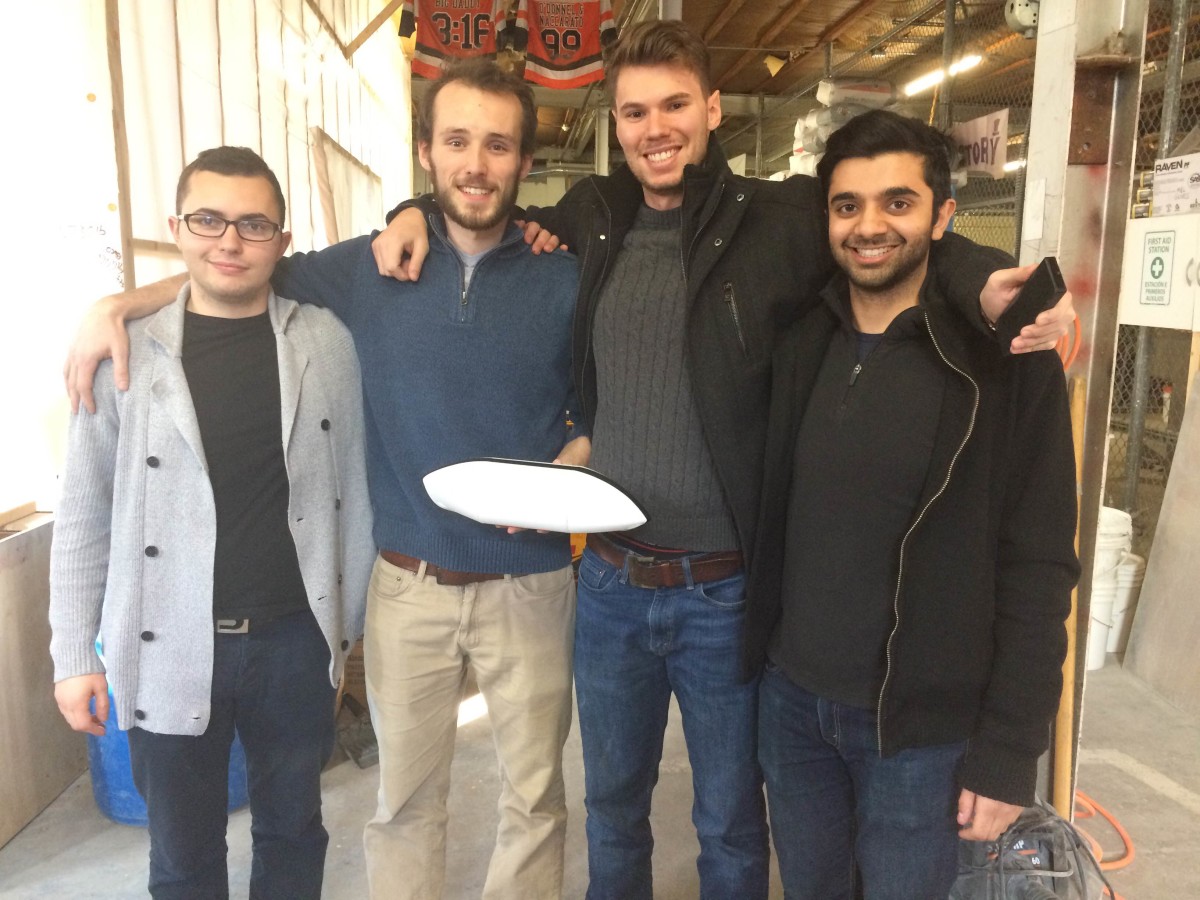Landable first-stage rockets and electric cars are only the tip of the iceberg when it comes to Elon Musk’s preferred modes of transportation.
In June of 2015, the SpaceX and Tesla Motors CEO announced the SpaceX Hyperloop Pod Competition for university engineering teams, and a massive team of Drexel students have accepted the challenge.
If the term “Hyperloop” hasn’t quite made it into your vocabulary yet, here’s a quick rundown, straight from the 57-page Hyperloop Alpha document (which, believe it or not, is quite a compelling read):
Hyperloop consists of a low pressure tube with capsules that are transported at both low and high speeds throughout the length of the tube. The capsules are supported on a cushion of air, featuring pressurized air and aerodynamic lift. […] The system consists of capsules that travel between Los Angeles, California and San Francisco, California. The total one-way trip time is 35 minutes from county line to county line.
In other words, it’s the high-speed, low-cost train of the future. Hope you’re not claustrophobic.
Musk and SpaceX aren’t currently developing any commercial Hyperloop technologies themselves, but they’re holding the competition in order to get the ball rolling on the idea.
After an initial 162 submissions to the preliminary design review, Drexel Hyperloop is one of 120 university teams from 16 countries to pass this review and continue to complete a final design package. (Teams from Penn and Lehigh are also competing.)
We met with student leaders of the university’s 87-person team, along with their advisor, Dr. Ajmal Yousuff, at one their campus workplaces.

The majority of the team is made up of undergraduate students studying mechanical engineering, although some students come from electrical engineering, computer science or product design backgrounds.
When initially entering the competition, teams had the option either to design the entire pod or a single subsystem, such as the air bearings or air compressor. Because of the depth of the large team’s talents, explains pre-junior Freddy Wachter, they decided to tackle the entire pod. (View design specs of the pod here.)
The team, therefore, is split into 11 groups, each focusing on a different subsystem from emergency braking to human safety and user experience. According to Wachter, they’ve even tossed around the idea of having cameras outside the Hyperloop tube so passengers could “see” the outside world as they pass by.
“We have a design team that’s working on the stations and the logistics of the pod as well, so we’re equally trying to add depth to our project,” adds senior Richard Crane.
Oliver Tillman, a senior studying mechanical engineering, gave us a demonstration of air bearings, the low friction technology behind the air cushion that makes the entire Hyperloop concept work.
When the project first started, the team reached out to New Way Air Bearings for help, says Tillman. In addition to helping them with their product design, New Way gave the team a graphite air-bearing part with a load capacity of 360 pounds.
In the below GIF, air pumps into the graphite block (black, on the bottom of the stack) and escapes through microscopic holes, causing it to float on an air cushion above the track.

From Jan. 29-30, 25 members of the team will head to Texas A&M for the competition’s Design Weekend, where they’ll present their design plans and try to recruit sponsors. They only get 20 minutes to present and 10 to field questions, but they’re most looking forward to the feedback they’ll receive from SpaceX, as well as the opportunities they’ll have to communicate with possible sponsors.
Right now, the cost of the Drexel Hyperloop project sits at around $60,000. The team has received some money from the university, for which they’re grateful, but fundraising and securing sponsorships are the next major concerns.
Dr. Yousuff is optimistic. “It’s a matter of selling [sponsors] the idea so they would be naturally interested in its capabilities, in these students’ capabilities.”
“We’re going through the process of getting all the funding we need so that next month we can start buying our parts, and then we have the three-month production schedule,” adds Wachter.

Those months will lead up to June of this year, when teams who have successfully built their pods will ship them out to SpaceX’s headquarters in California, where the company will have constructed a mile-long test track to give the pods a whirl.
“That’s going to be interesting, just seeing if six months of work and money went into something that can actually stay standing,” said Wachter of the pod’s eventual test run.
“After Design Weekend, our design is finalized, so we pretty much just start building and testing,” said Tillman. “That’ll be the fun part.”







